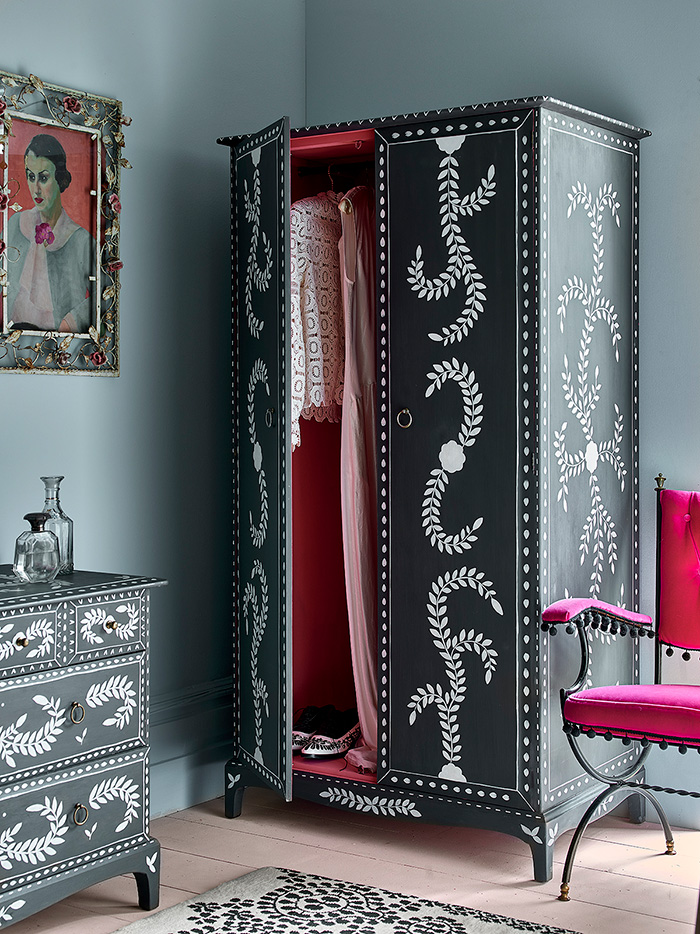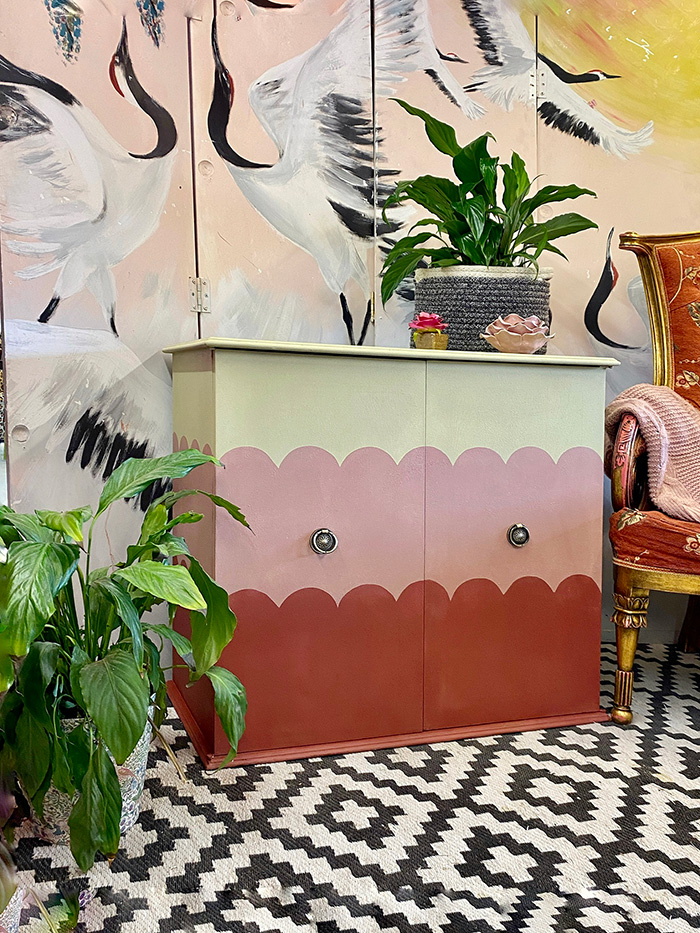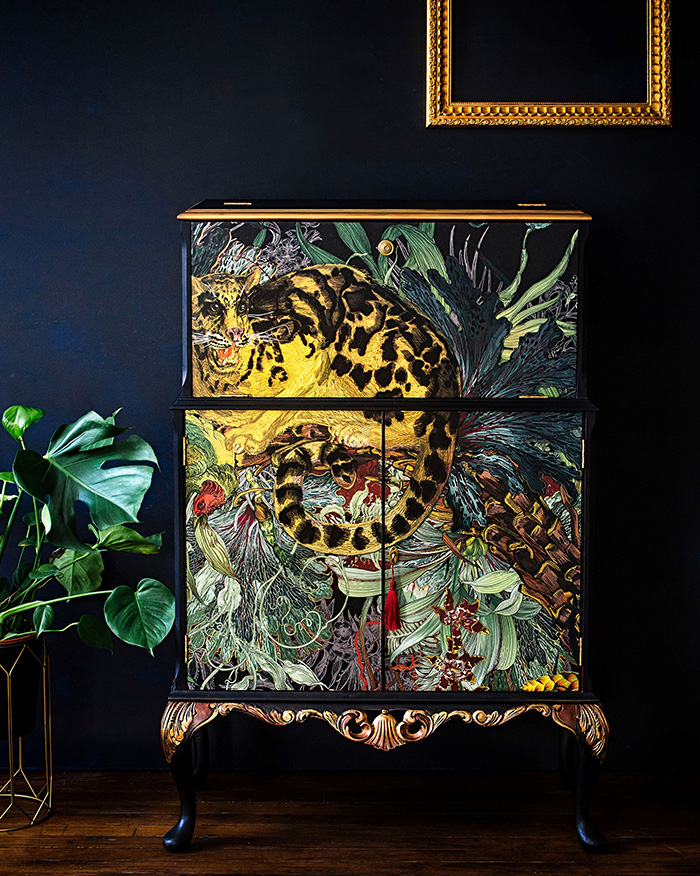How furniture upcycling has come of age
We speak to four industry professionals on what furniture upcycling really means, and why it’s here to stay
Utter the phrase ‘shabby chic’ and the reaction often garners the same response as ‘curtain pelmet’ or ‘avocado bathroom’. Strange really, when not 10 years ago old-looking, cream furniture was de rigueur. Maybe we’ve seen too many painted ‘Live Love Laugh’ wooden signs, but creating that distressed chippy look was the beginning of something new – furniture upcycling.
However, even now just the term ‘upcycling’ can conjure up more shock than chic. Carrie Webb, sustainable furniture designer, agrees: ‘The word “upcycling” has always been problematic. It’s a perfectly good term in itself and very accurate as it describes how we are elevating the piece from what it was previously, as opposed to just fixing or even restoring it. However, it has always had a bit of a stigma attached to it within the interiors industry. There are historical reasons for this – furniture upcycling as we know it really took off from the shabby-chic look which was much imitated, often with poor-quality results. In the minds of the general public this image of upcycling stuck.’

webbandgray.com
But with our increasing awareness of waste and the need to look after the planet, plus the trend for nostalgia, buying consciously and honouring the past, the design and interiors industries have caught on to the benefits of upcycling, which is spilling over into the mainstream. Upcycling has become a movement, promoted by big brands including IKEA (whose products are ripe for reimagining), paint companies old and new, and designers themselves, as well as emerging professionals who have turned an artistic talent or sustainable lifestyle into a career.
‘I think we’re now starting to see the back of this stigma, with the focus on sustainability meaning that upcycling is being recognised as a skilled craft that has an important role to play in reducing the environmental impact of the interior-design industry,’ Carrie points out. ‘Upcycled furniture can now be seen at international design shows and in leading interiors publications. People are finally beginning to understand!’

anniesloan.com
Chris Billinghurst, founder of The House of Upcycling which supports professional upcyclers and champions the benefits of buying and commissioning designer upcycling, has seen both her organisation and the industry grow. ‘Interestingly, there are now high street and online stores selling items which emulate the furniture upcycling style, particularly with regard to flat-painted furniture and decoupage, so the professional upcycling industry is becoming a trend-setter in its own right,’ she says. ‘And although upcycling will always be associated with the shabby chic of chalk paint and distressed surfaces, it’s now just a small part of the upcycling landscape as trends continue to evolve.’
Indeed, there’s no single upcycling style; individuality and artistry are key. ‘If anyone can call themselves an artist, I think it’s the same with upcycling – it’s such a personal choice,’ says Marcie K, furniture designer and Reclaim columnist. And with the huge and growing selection of paints and products, the possibilities for creativity are endless, meaning anyone can – and should – have a go at upcycling.

marciekdesigns.com
‘It’s becoming a way of life, something we should be doing just as a matter of course, questioning what we send to landfill,’ says Lynne Lambourne, an interior designer with a focus on sustainability and upcycling. ‘Could we make use of an item in another way – stopping ourselves buying new?’ In this way, even if we’re not painting furniture, we can all upcycle, reuse or reimagine older pieces, or items that we already have. It’s really a process that results in reducing waste by creating a new and original item. ‘Upcycling is just creative reuse,’ Lynne continues, ‘taking something you weren’t using in its current form and giving it a new purpose.’
As Chris points out, ‘after a decade of education and discussion and with the increased interest in sustainability, particularly among the interior-design fraternity, upcycling has lost its less-appealing associations and is being awarded the status it deserves.’ Just as we can choose to buy a designer dress, a vintage frock or high-street clothing, so we can decide to commission an upcycled chest of drawers from a skilled artisan, buy a reimagined piece off-the-shelf, or pick up an old table and paint it ourselves.

ladygriddlebone.com
So what’s next? ‘Art deco, particularly using gold leaf or paint on walnut, remains popular, particularly for drinks cabinets, as do dark colours for painted furniture together with heavily patterned decoupage papers,’ says Chris. ‘We’re also now seeing more artisans turning their hand to other types of upcycling, such as creating lighting, art and home accessories.’ Both Carrie and Marcie agree that we’ll see more bare wood on upcycled pieces rather than covering everything with paint.
Upcycling is no fad and is open to everyone from the professional designer and artist to have-a-go hobbyists. Furniture can become self-expression and, in the midst of both a cost-of-living and climate crisis, reusing existing items is the logical and budget-friendly way to go. Now that’s not too shabby.
Before you go...
...fancy automatic entry to all future competitions?
Simply register online today for FREE and you will get:
Automatic entry to all current and future competitions.
Access to Reclaim Inspiration - an online visual pinboard for saving all your home and style inspiration.
A regular newsletter of inspiration, ideas and advice.

Save all your articles in one place
Become a Reclaim Member to save all your home and style inspiration. Simply login or register online today for FREE and you will get:
Automatic entry to all current and future competitions.
Access to Reclaim Inspiration - an online visual pinboard for saving all your home and style inspiration.
A regular newsletter of inspiration, ideas and advice.








